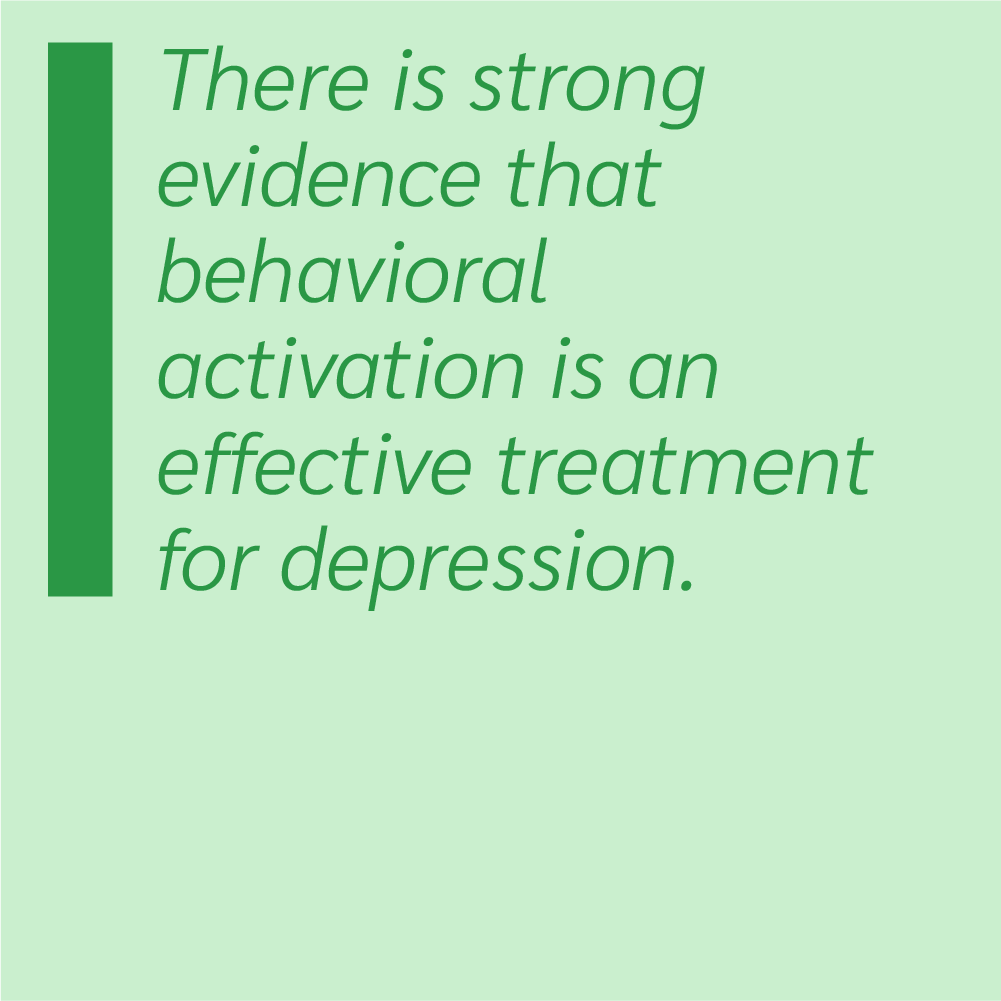Behavioral Activation Activity Diary
Download or send
Tags
Languages this resource is available in
Problems this resource might be used to address
Techniques associated with this resource
Mechanisms associated with this resource
Introduction & Theoretical Background
Learning theories propose that depression is the result of losing touch with sources of positive reinforcement: falling into habits of inactivity (or the wrong kinds of activity) lead to a lowering of mood. Once an individual feels depressed they may lack motivation, become less active, experience less positive reinforcement – and the cycle repeats or exacerbates. A behavioral approach to overcoming this vicious cycle of depression is to increase one’s level of activity even in the absence of feelings of motivation. This approach is called behavioral activation (BA) and there is strong evidence that it is an effective treatment for depression (Ekers et al, 2014), with equivalent effect sizes to treatments such as cognitive therapy (Jacobson et al, 1996). Modern approaches to BA include Martell, Addis & Jacobson’s package Depression in context: Strategies for guided action (2001), and Lejuez, Hopko & Hopko’s package Brief Behavioral Activation Treatment For Depression (BATD:
Therapist Guidance
“So that we can start to gather some ideas about why you are depressed I would like you to use this activity diary to record what you do every day for a week, even for activities that might seem trivial or unimportant. We need to find out how your mood changes as you do different activities, so rate your mood for each time slot on a scale of 0 to 10, with 0 representing feeling very depressed and 10 representing feeling very good.”
Once a client has monitored their activity for a week the information recorded can be examined for deficits in (rewarding) activity, relationships between activity and mood, breadth or restriction of activity, and consistency with values. Some helpful questions include:
- Looking at it now, what do you notice about what you recorded on your activity diary?
- What activities made you feel the best?
References And Further Reading
- Ekers, D., Webster, L., Van Straten, A., Cuijpers, P., Richards, D., & Gilbody, S. (2014). Behavioural activation for depression; an update of meta-analysis of effectiveness and sub group analysis. PloS one, 9(6).
- Jacobson, N. S., Dobson, K. S., Truax, P. A., Addis, M. E., Koerner, K., Gollan, J. K., ... & Prince, S. E. (1996). A component analysis of cognitive-behavioral treatment for depression. Journal of Consulting and Clinical Psychology, 64(2), 295.
- Kanter, J. W., Manos, R. C., Bowe, W. M., Baruch, D. E., Busch, A. M., & Rusch, L. C. (2010). What is behavioral activation?: A review of the empirical literature. Clinical Psychology Review, 30(6), 608-620.
- Lejuez, C. W., Hopko, D. R., & Hopko, S. D. (2001). A brief behavioral activation treatment for depression: Treatment manual. Behavior Modification, 25, 255−286.




